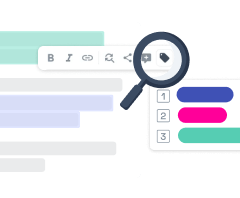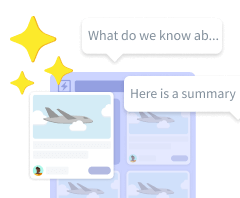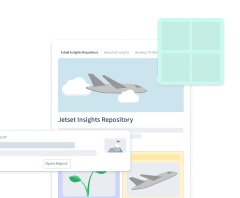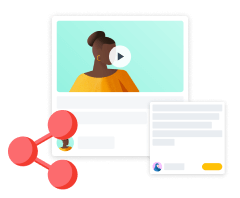
The Weir Group Boosts the Impact of User Research to Get Stakeholder Buy-in

The Challenges
- The Weir Group's sustainability team was skeptical of the need for user research in their project
The Solution
- Explaining how user research works with project walkthroughs
- Engaging stakeholders using a live report and weekly updates
- Backing up results and decisions with video evidence
The Results
- The need for user research was demonstrated and justified
- The scope of the project was transformed to great effect
- Christian got a promotion
About the company
The Weir Group is the world leader in manufacturing most of the equipment that is used at mining sites all over the world. As of late, a huge focus (both in their company and across the mining industry) has been the matter of building mining technology that supports a sustainable future. To this end, their sustainability team wanted a more efficient way to pull together their sustainability KPI data and called in their user experience research (UXR) team to support them with this project.

The Challenges
When Christian and the UXR team came on the scene, they kicked off the project by asking questions that called the user base and the scope of the project into question. At first this created a bit of confusion from the sustainability team, who already had set parameters for the tool they wanted in mind. But the UXR team ultimately saw it as an opportunity to demonstrate how user research could help unlock additional insights that the sustainability team previously wasn’t aware of, and help build a tool that met a greater need than they originally anticipated.
The Solution
In order to demonstrate how user research works, Christian and the team used Condens to help visualize and explain the process of synthesizing and analyzing data to produce actionable findings and insights.

Explaining How User Research Works
The first thing Christian and the UXR team did was explain how user research works. They used Condens to walk the sustainability team step by step through some of their previous projects and demonstrate what they do fundamentally as user researchers. That is, to speak to people, understand their needs, and build a solution that meets their needs.
By breaking it down and showing them real examples from other projects, they demonstrated how UXR could be applied to their project.
„Condens helped us walk them through the research process step by step. We were able to make what seemed to be a complicated process simple and easy to understand. We sold them research by selling them Condens.“
Creating a Central and Accessible Participant Pool
Once they got their sustainability team onboard, they started carrying out user research for the new sustainability project. They compiled a list of participants and added all their user information into Condens.
Uploading and storing user data in Condens made it easier to keep track of things like signed non-disclosure agreements (NDA’s), and ensure that documents were centrally stored and easily accessible in accordance with GDPR regulations.
Tagging Key Points and Highlights
After conducting interviews with users and participants, the interviews were uploaded to Condens and automatically transcribed. The UXR team then used the transcripts to create a total of 347 highlights and 605 tags across 48 topics.
In the weekly project update calls Christian had with stakeholders, the number one thing that they focused on during the calls was the Tags chart. This helped to impress the size and scale of the project on the executives they presented the data to.

Sharing Research with Stakeholders
They wanted to keep their stakeholders engaged throughout the entire research process, which was 10 weeks in total. And Condens helped give them almost direct access to Christian’s brain.
The UXR team set up an open Condens report with a link and password that could be shared with anyone that wanted to see it. This report was constantly being updated and did not have final results. But it allowed stakeholders to stay up-to-date on the progress of the research and findings.
Stakeholders were also set up with free stakeholder roles in Condens, which enabled them to look inside the repository and review the videos and data.
„In an ideal world, decisions would be made after all the research is finished. But that often doesn't happen in reality. Decisions are constantly being made, often before the research results are in. So drip feeding information can be a good way to help people make decisions with all the information that is available at the moment.“
Presenting Results and Getting Buy-In
Once the research results were in, The Weir Group’s UXR team used Condens to present their findings and get buy-in from stakeholders. They were able to refer back to the reports they had created in Condens with all the evidence from the user interviews to back up their claims or justify design and budget decisions.
The video Highlights were especially helpful in cases where someone said something like, “but that’s just your opinion”, because the evidence of users sharing their experience supported and confirmed their research findings.
The Results
By using Condens to demonstrate the value that user research could add to the sustainability project, the scope of the project changed completely. Condens helped them break down, visualize, and justify user research in order to get stakeholders to give more consideration to how their decisions make an impact.
From the initial task of just building a tool for an app that would pull together a lot of sustainability data for one person, it transformed into a task to build a tool that anyone across the entire company of 12,000 people could use to access up-to-date, granular, and malleable data that could be tailored to a regional or country level, and beyond.

After successfully incorporating their user research insights into the project, all the users and stakeholders were extremely happy with the results. So much so that the UXR team was subsequently entrusted with delving deeper into the project to expand its scope, and Christian got a promotion!
Yay!




